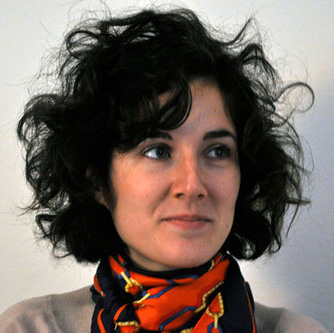Blog
As a Flag Becomes a Body
14 March 2019 Thu
The work by Kathrin Stumreich, Sovereignty (2017) is included in the exhibition that opened at Borusan Contemporary last week: Overture: Selections from the Borusan Contemporary Art Collection, curated by Kathleen Forde, the artistic director at large of the museum. The work carries traces of performing arts while interfering with the space, positioning us both as participants and as spectators.

MERVE ÜNSAL
merve.unsal@gmail.com
The protagonist of Stumreich’s installation is a flag. Made of muslin silk, the flag is light blue and is half-permeable with a fluttering presence. The artist has traced the origins of muslin silk to Mosul in Northern Iraq, which she found significant. Her use of this material that originated from an important center of commerce and production, Mosul, also draws attention to that city’s relationship with the notions of sovereignty and flags.
The flag is attached to a robotic arm that moves it and is thus raised from the ground. However, the movement and the “pole” that it is attached to is very different from what we usually think of as a flag pole. The movement of the flag is humanized because of this shift in scale. In other words, instead of being perceived as a self-contained entity that moves with the wind on a pole, Stumreich’s installation transforms the flag into a thing that is moved by a body.
Stumreich composed the movement of the robot arm as a 9-minute choreography, moving the flag 360 degrees. The flag is located at the center of the scene and is rotated around an axis, implying that the viewers can be anywhere within the room. The central axis formed by the movement of the flag makes viewers acutely aware of the space and the situation that they are in.

Kathrin Stumreich, Sovereingty, 2017. Photograph: Özge Balkan
The first element of the 9-minute choreography is that the robot arm moves up and down, consequently moving the flag quickly or slowly. Stumreich's emphasis on this movement composition is mobility rather than fluidity; sometimes the sudden acceleration of the flag creates a halt and we cannot predict the movement of a character that strengthens this feeling. This lack of definition implies that when the object being moved is a flag, the things that the flag represents are also being moved by unpredictable forces or could be moved as such.
The movement choreography of the flag has different connotations at each stage. For example, the flag is almost parallel to the ground when moved quickly, can be associated with the sky, as the artist pointed out. When paused, it collapses with its own weight into an idle prop, waiting for something to happen.
The sound element at the center of the choreography is actually linked to the movement of the flag. The laser beam, which moves between the tripods on the two sides of the room, produces the sound that occurs when it hits the flag. The principle of this sound production is a very simple electronic principle has been adapted to the present: the idea that Graham Bell began to develop in the 1800s and Léon Theremin developed it, inventing the theremin in 1919-1920. The basic principle is that if a field of electromagnetic waves is created, sounds can be produced when a body or an object interrupts this field. This idea, which transforms recognition technology into sound, is the foundation for the theremin instrument. The two antennas, one placed horizontally one placed vertically, creates electromagnetic waves, which makes it appear that the person playing the instrument is playing air. Similarly, Stumreich’s setup also creates sound every time the laser hits the flag. This location and context-specific situation, which is influenced by elements such as the angle of impact, velocity, and permeability of the silk, acts as a sound filter. The flag itself does not produce the sound, but it is critical in producing sound as a part of the situation within the created space. In this context, when the flag is read as a body again, not the source of the sound or situation, it is a tool that causes the transformation. We could also interpret the situation in the opposite way: The sound will not be formed if the flag does not move and is thus like a potential waiting to be activated; the sound is “live” only through the flag.

Kathrin Stumreich, Sovereingty, 2017. Photograph: Özge Balkan
The fact that the material in Stumreich's work is transformed into readable data and that this data is shown as an experienced choreography creates a situation that contributes to the awareness of the audience. The fact that every kind of movement of the material turns into a different voice, sometimes noise, sometimes softening, and a melodic composition that can be seen as music, makes us think about the fact that the same thing can put a place, a situation, a moment into different situations. Forming a field on the one hand made by the flag rotating continuously around itself, the area can be read as ownership, and on the other hand it can actually be read as a madness, a futility.
The hypnotic mobility of the work, which includes both spatiality and temporality, also has a calmness. The flag continues to turn around itself while the audience is absent and will continue to do so; this is a refusal to become one with the viewers. In fact, the flag is condemned to its circumstances and could thus be seen as an object of oppression. The viewers not being able to alter the flag’s movement is also made significant with the title of the work, “sovereignty.”
ABOUT THE WRITER
Merve Ünsal is a visual artist based in Istanbul. In her work, she employs text and photography, extending both beyond their form. Ünsal is the founding editor of the artist-driven online publishing initiative m-est.org.



